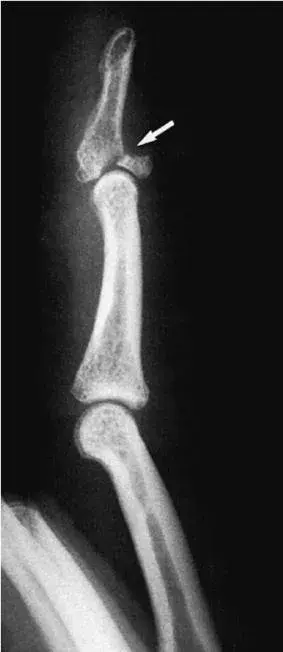Most Missed Question in Emergency Medicine This Week
What do you tell her about the most likely prognosis in her condition?
Answers:
- Sixty percent of patients have complete recovery within 7 days.
- Most patients will be at risk for recurrent pericardial effusion for up to 6 months.
- Viral pericarditis is the number one cause of non-traumatic pericardial tamponade.
- Of all non-traumatic pericardial tamponade cases, more than 40% occur after a “probable viral pericarditis.”
We wouldn’t exactly call it a trick, but half the question deals with ECG findings, you’re supposed to find pericarditis. Diffuse ST-segment elevations with upward concavity seen in all leads except aVR and V1, which show reciprocal depression, PR-segment depression, and no focal ST elevation, no Q waves, and normal troponins.
The correct answer is #1. Most of the incorrect answers focus on knowledge of recurrence or overestimating the severity.
Why This Question Is Often Missed
- Misinterpreting the diffuse ST-elevation pattern as acute STEMI rather than pericarditis.
- Overemphasizing complications (tamponade, recurrence) rather than recognizing the generally benign self-limited course.
What the Distractors Indicate
| Option | What It Tests / Implies | Why It’s Wrong Here |
|---|---|---|
| Sixty percent of patients have complete recovery within 7 days. (Correct) | Expected natural history of acute viral pericarditis | — |
| Most patients will be at risk for recurrent pericardial effusion for up to 6 months. | Understanding of effusion recurrence timelines | Recurrence risk exists (15–30%) but not effusion in “most” or for that long. |
| Viral pericarditis is the number one cause of non-traumatic pericardial tamponade. | Etiology of tamponade in pericarditis | Tuberculosis and malignancy exceed viral causes in tamponade. |
| Of all non-traumatic pericardial tamponade cases, more than 40% occur after a “probable viral pericarditis.” | Attribution of tamponade incidence post-viral pericarditis | True incidence of tamponade in viral pericarditis is <5%, far below 40%. |
High-Yield Pearl
Most acute viral pericarditis cases resolve within one week; severe complications are uncommon.
Core Learning Objectives
- Describe the typical clinical course and prognosis of acute viral pericarditis.
- Recognize key ECG findings that distinguish pericarditis from myocardial infarction.
The “Test Trick” at Play
The distractors play on overestimating complication rates—tamponade and effusion recurrence—to lure examinees who know pericarditis can complicate but miss how infrequently and how quickly it usually resolves.
Additional Practice Questions and Remediation
Objective A: Prognosis of acute viral pericarditis
Objective B: ECG differentiation of pericarditis
Question 1
A 30-year-old man presents with sharp chest pain, improved by leaning forward. ECG shows diffuse ST-elevation with PR depression. He’s treated with NSAIDs and colchicine. Two days later, he asks about when he’ll feel normal. What’s the most accurate answer?
A. Complete resolution in > 90% within 48 hours
B. Complete recovery in 60% within 1 week
C. Persistent chest pain in most up to 3 months
D. Nearly 50% develop constrictive pericarditis
Answer and Remediation
- If you chose B: Correct response! Most recover within 7 days.
- Review:
- A: Too optimistic—full 48 hour recovery is <20%.
- C: Long pain duration occurs but in <20%.
- D: Constriction is rare (<1%), not ~50%.
Question 2
A 45-year-old woman with viral prodrome now has chest pain and low-grade fever. ECG: diffuse, concave ST-elevations and PR depression in multiple leads. She asks about risk of tamponade. Which is true?
A. Tamponade develops in >30%
B. Tamponade risk <5%
C. Tamponade risk ~15%
D. Always requires pericardiocentesis
Answer and Remediation
- If you chose B: Correct response! Tamponade in acute viral pericarditis is uncommon (<5%).
- Review:
- A & C: Both overestimate the risk.
- D: Only if clinically significant; most managed medically.
Question 3
A viral pericarditis patient’s ECG evolves over days. Which pattern is most characteristic?
A. New Q waves in V3–V5
B. Diffuse concave ST-elevations, PR depressions
C. Localized convex ST-elevations in II, III, aVF
D. New left bundle-branch block
Answer and Remediation
- If you chose B: Correct response! That’s classic pericarditis.
- Review:
- A, C: Q-waves and localized elevations suggest MI.
- D: LBBB is nonspecific, not diagnostic.
Question 4
In counseling a 28-year-old with acute pericarditis, which statement is accurate?
A. Recurrence is virtually unheard of after first episode
B. NSAIDs are contraindicated in viral pericarditis
C. Colchicine reduces recurrence risk
D. Echocardiography routinely identifies myocardial involvement
Answer and Remediation
- If you chose C: Correct response! Colchicine cuts recurrence rates roughly in half.
- Review:
- A: Recurrence occurs in ~15–30%.
- B: NSAIDs are first-line therapy.
- D: Echo may show effusion but not myocarditis.
Question 5
A patient with pleuritic chest pain, diffuse ST-elevations, and PR depression wants to know if exercise is safe now. You advise:
A. Resume full exercise immediately
B. Avoid exercise until CRP normalizes
C. Only light stretching today, then full exercise tomorrow
D. Exercise increases recurrence risk by >50%
Answer and Remediation
- If you chose B: Correct response! Exercise restriction until inflammation markers normalize is recommended.
- Review:
- A & C: Too permissive—may prolong inflammation.
- D: Overstates the risk; exact increment is lower.
Mini Case Discussion Prompt
Compare management and prognostic expectations between acute viral pericarditis and Dressler’s syndrome (post-MI pericarditis).
This question appears in Med-Challenger Emergency Medicine Review with CME
Try for free and save. Ace your exams and meet your CME/MOC requirements for just $35 a month!
No matter your program, no matter the size, Med-Challenger for Groups and Institutions can better prepare your program or group, fulfill industry requirements, and increase test scores.






